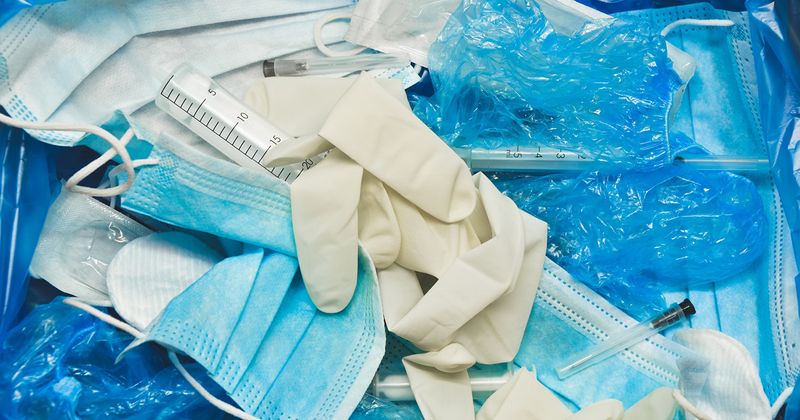WHO report reveals tons of excess health care waste due to COVID-19
Click Here to Manage Email Alerts
The global response to the COVID-19 pandemic has produced tens of thousands of tons of extra health care waste that many facilities are not equipped to handle, according to WHO.
In a recent report, WHO estimated that more than 140 million COVID-19 test kits and 731,000 liters of chemical waste have been shipped through a global supply portal. Also, more than 8 billion vaccine doses have been administered worldwide, amounting to 144,000 tons of additional waste. The test kits alone have the potential to generate 2,600 tons of noninfectious waste, primarily plastic, according to a WHO press release.

Personal protective equipment (PPE) such as masks and gloves has also led to large amounts of waste. The WHO African Region received the largest volume of gloves and masks during the pandemic. As of November 2021, 18,000 tons of gloves and 3,000 tons of masks were shipped to this area, according to the report. These estimates do not include waste produced by the public, including disposable masks.
Meanwhile, 30% of health care facilities overall, and 60% of facilities in the least-developed countries, are not equipped to handle existing loads of health care waste, much less the excess waste from the pandemic response, WHO said.
“It is absolutely vital to provide health workers with the right PPE,” Michael J. Ryan, MPH, MB, BCh, BAO, the executive director of WHO’s Health Emergencies Program, said in the release. “But it is also vital to ensure that it can be used safely without impacting on the surrounding environment.”
To reduce the health care waste that ends up in landfills or disposal sites, WHO recommended several actions that facilities can take, like using ecofriendly packaging and shipping, safe and reusable PPE and recyclable or biodegradable materials. The agency also advised centers to invest in non-burn waste treatment technologies and recycling support.
“A systemic change in how health care manages its waste would include greater and systematic scrutiny and better procurement practices,” Anne Woolridge, BSc, MSc, PhD, DGSA, the chair of the International Solid Waste Association’s Health Care Waste Working Group, said in the release. “There is growing appreciation that health investments must consider environmental and climate implications, as well as a greater awareness of co-benefits of action.”
For example, safe use of PPE can reduce environmental harm from waste, save money, reduce potential supply shortages and support infection prevention, according to Woolridge.
Exporting materials like PPE can also contribute to the overall carbon footprint of this equipment. In the U.K., the carbon footprint of PPE could be reduced by 12% if it is manufactured nationally instead of being shipped from Asia, according to the report.
“The health sector is under increasing pressure to reduce its carbon footprint and minimize the amount of waste being sent to landfills — in part because of the great concern about the proliferation of plastic waste and its impacts on water, food systems and human and ecosystem health,” the release said.
References:
Global analysis of health care waste in the context of COVID-19. https://www.who.int/publications/i/item/9789240039612. Published Feb. 1, 2022. Accessed Feb. 1, 2022.
Tonnes of COVID-19 health care waste expose urgent need to improve waste management systems. https://www.who.int/news/item/01-02-2022-tonnes-of-covid-19-health-care-waste-expose-urgent-need-to-improve-waste-management-systems. Published Feb. 1, 2022. Accessed Feb. 1, 2022.

